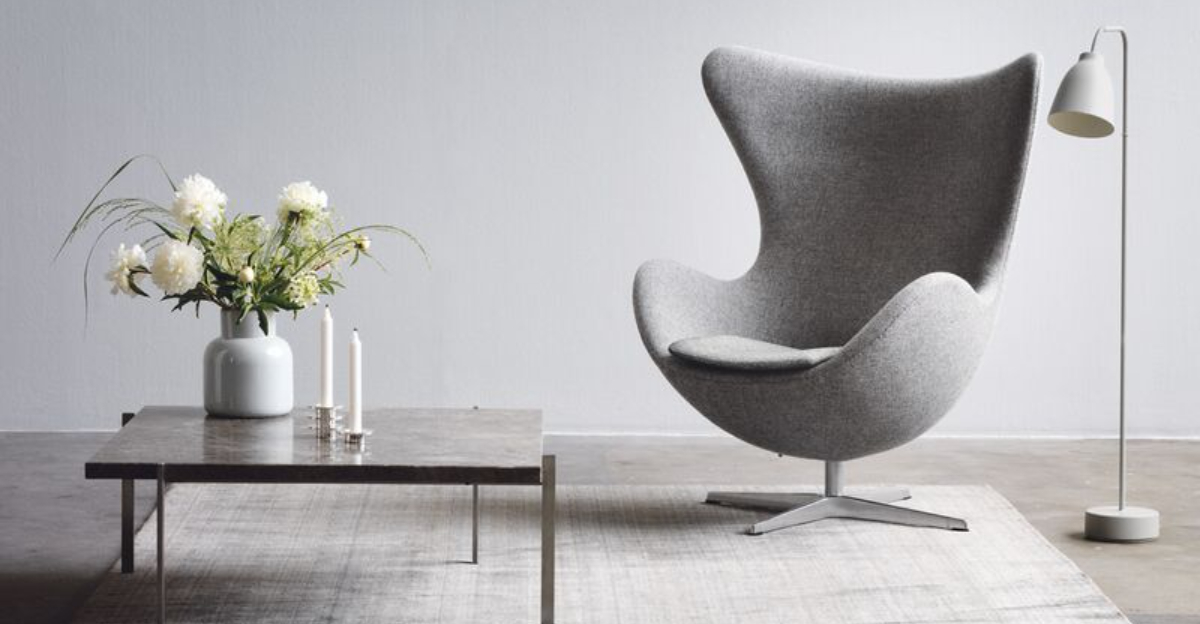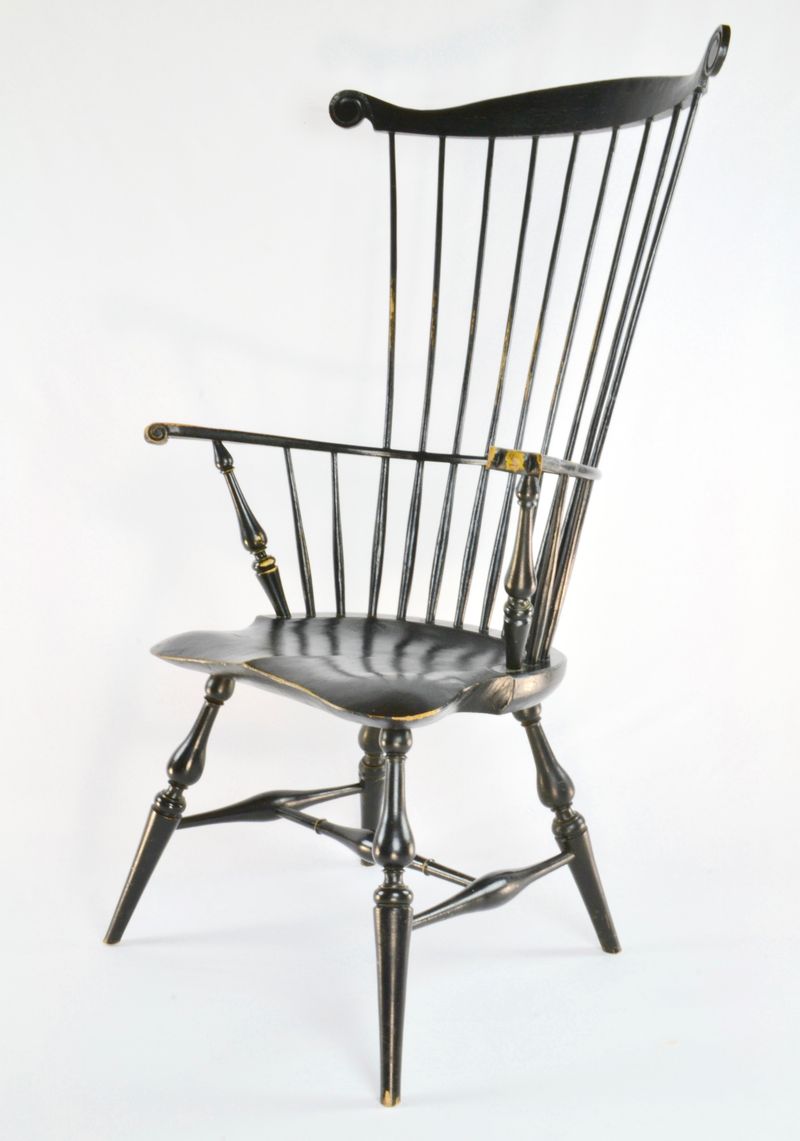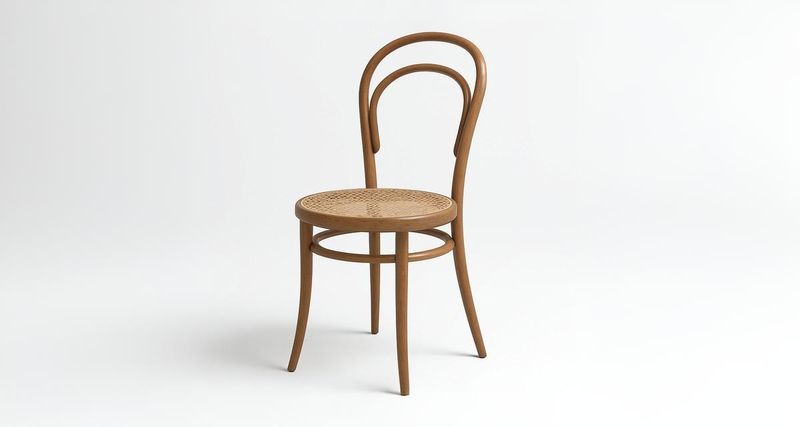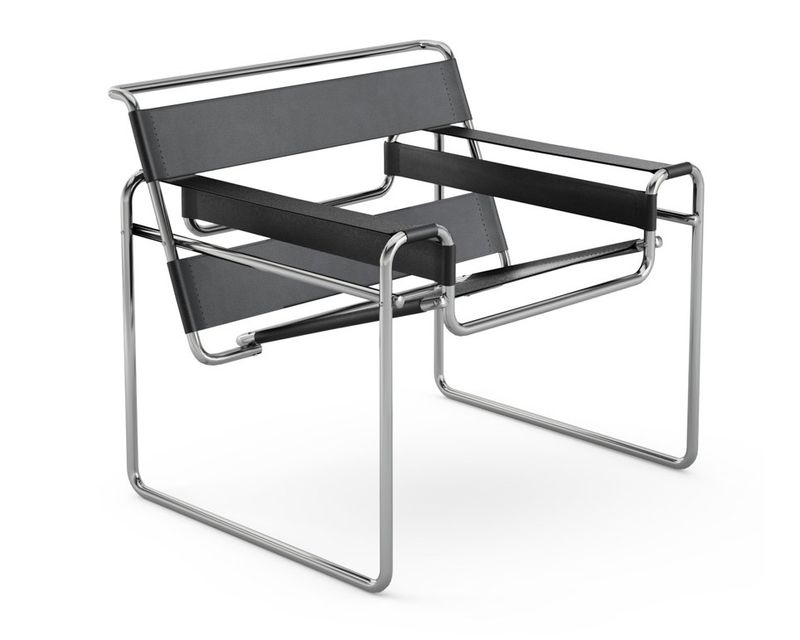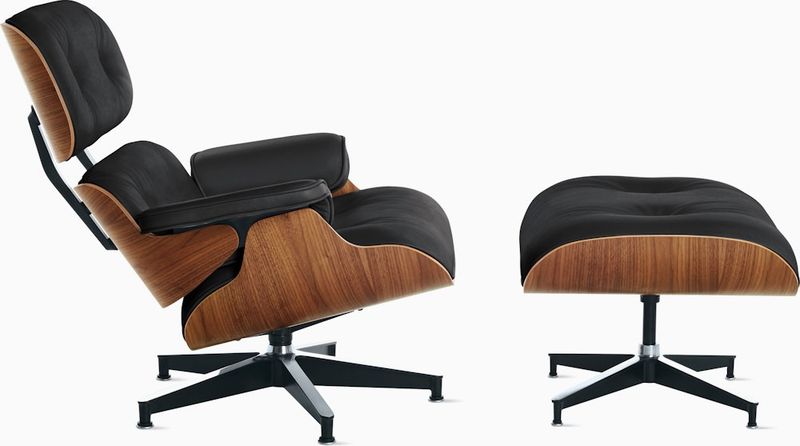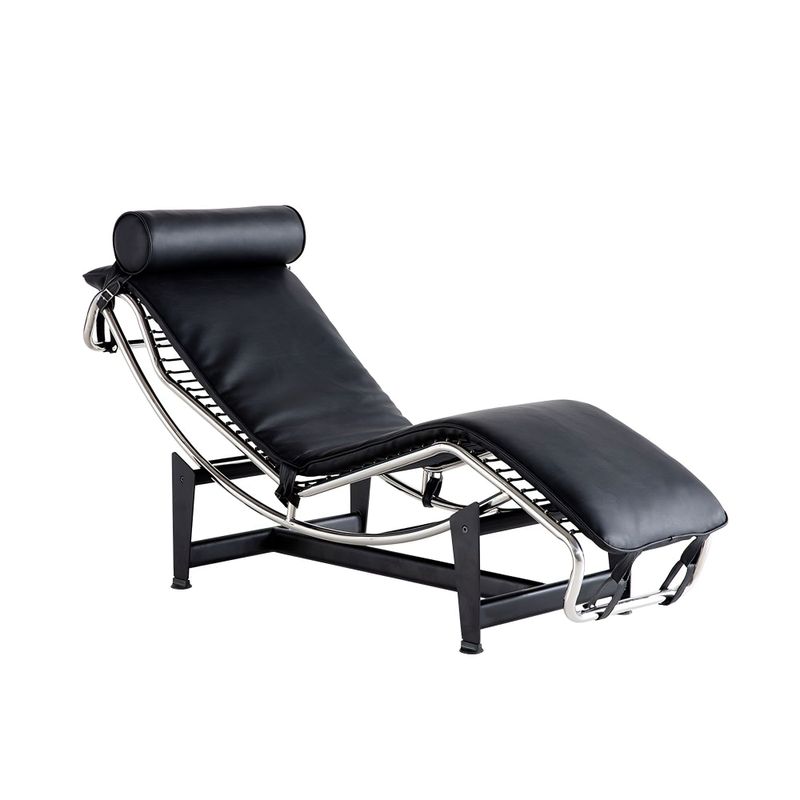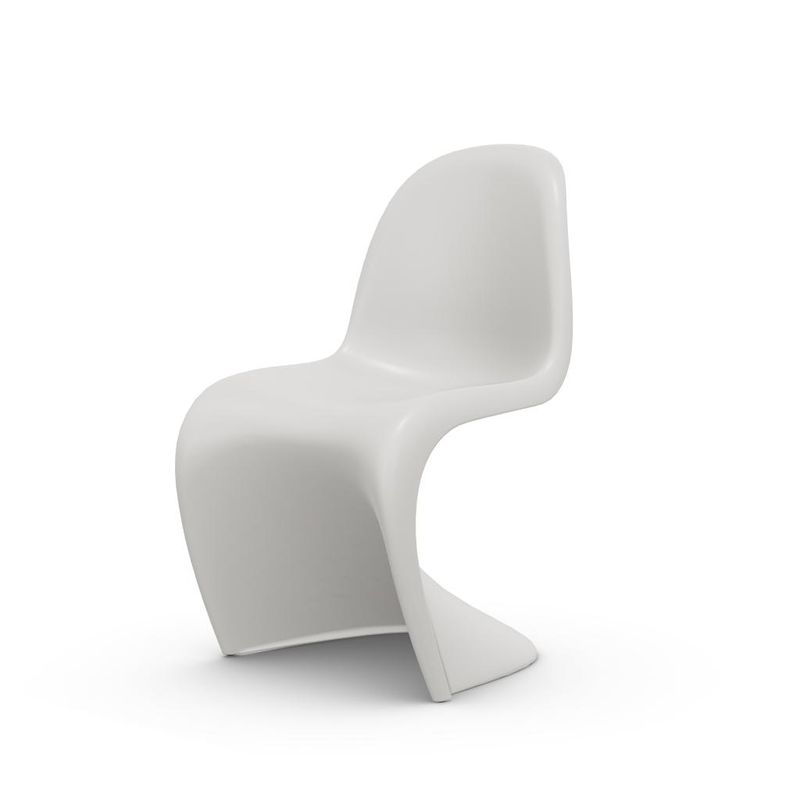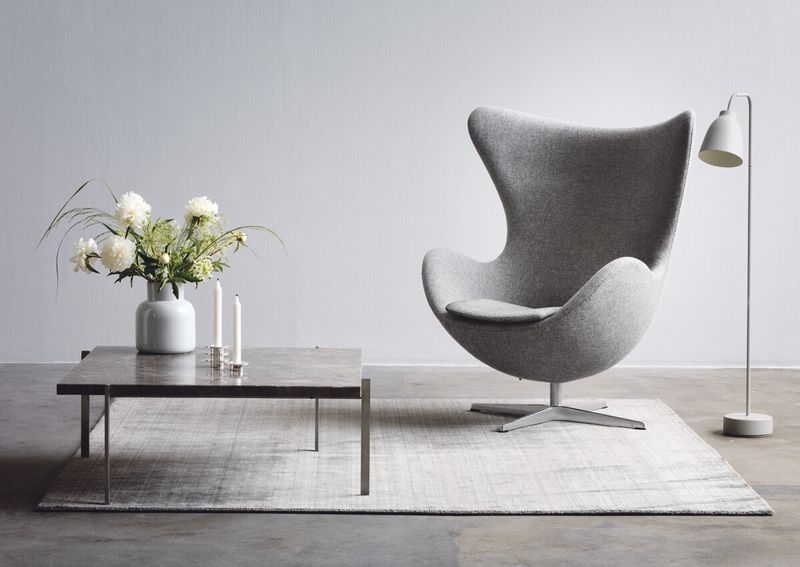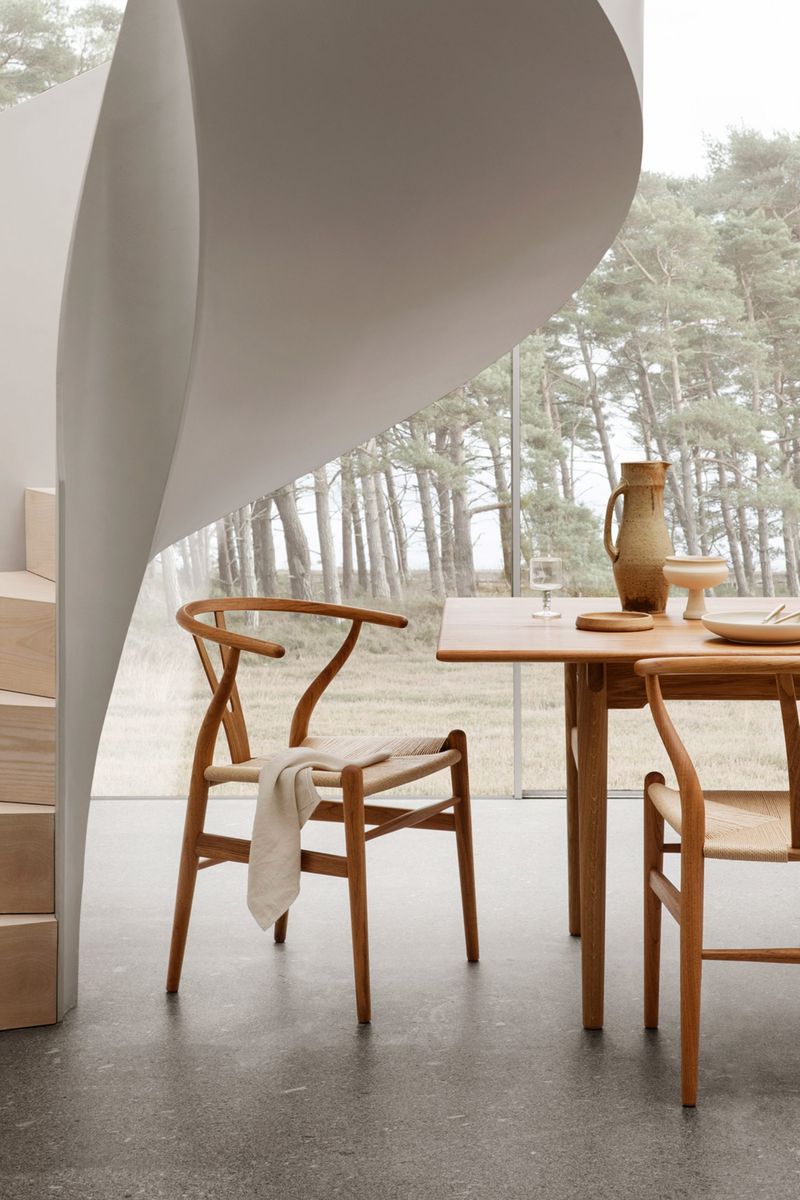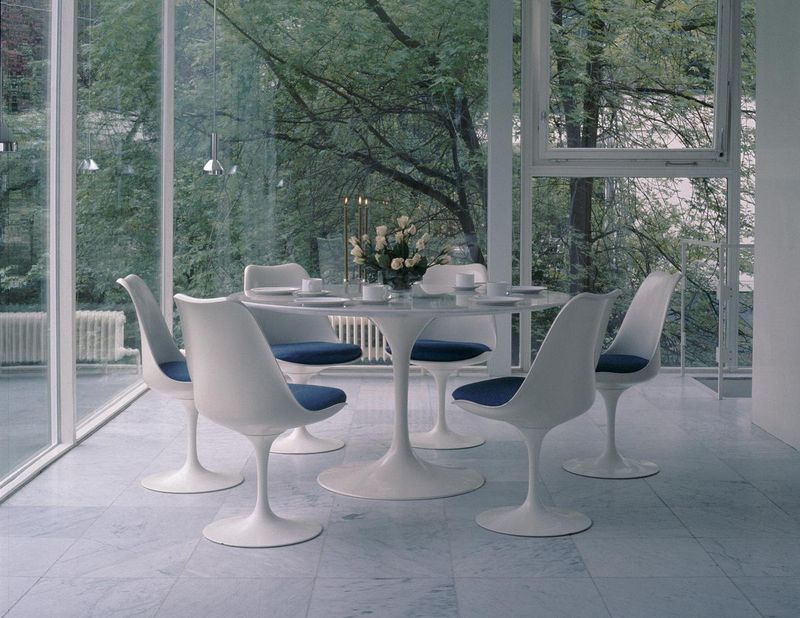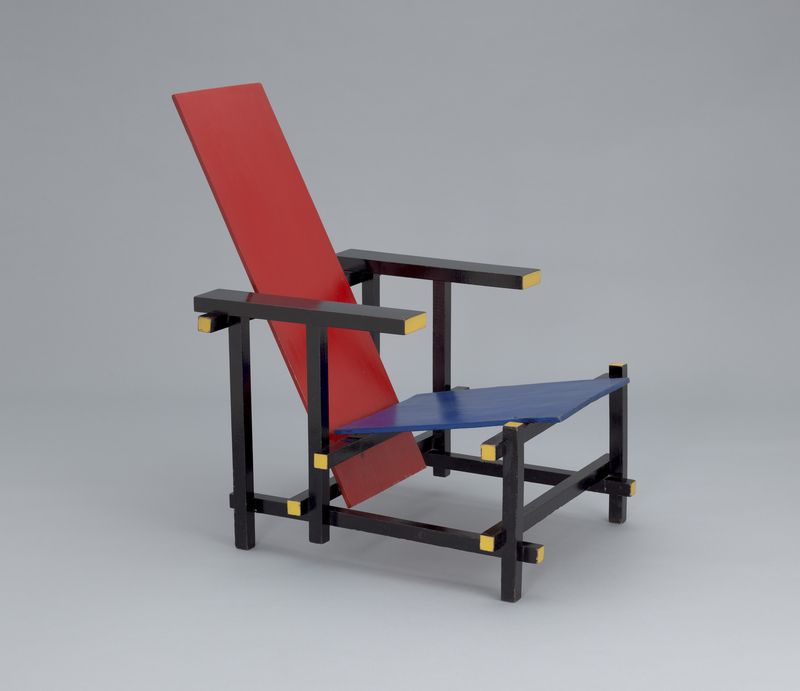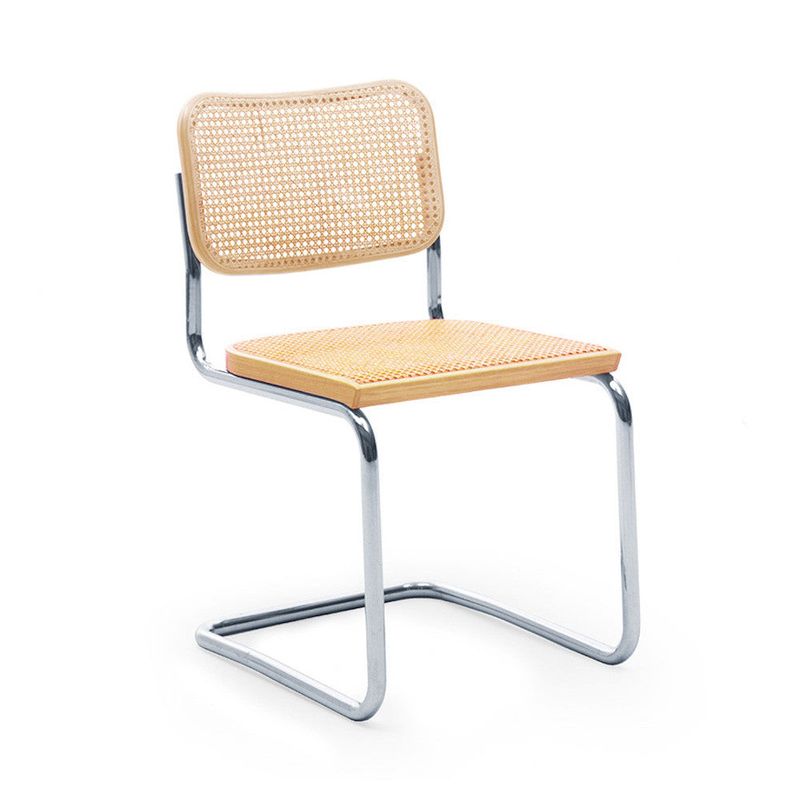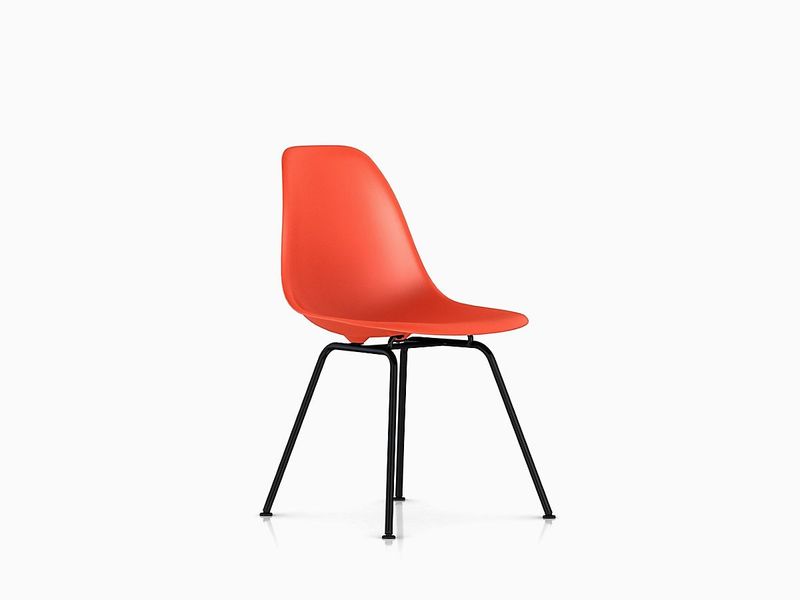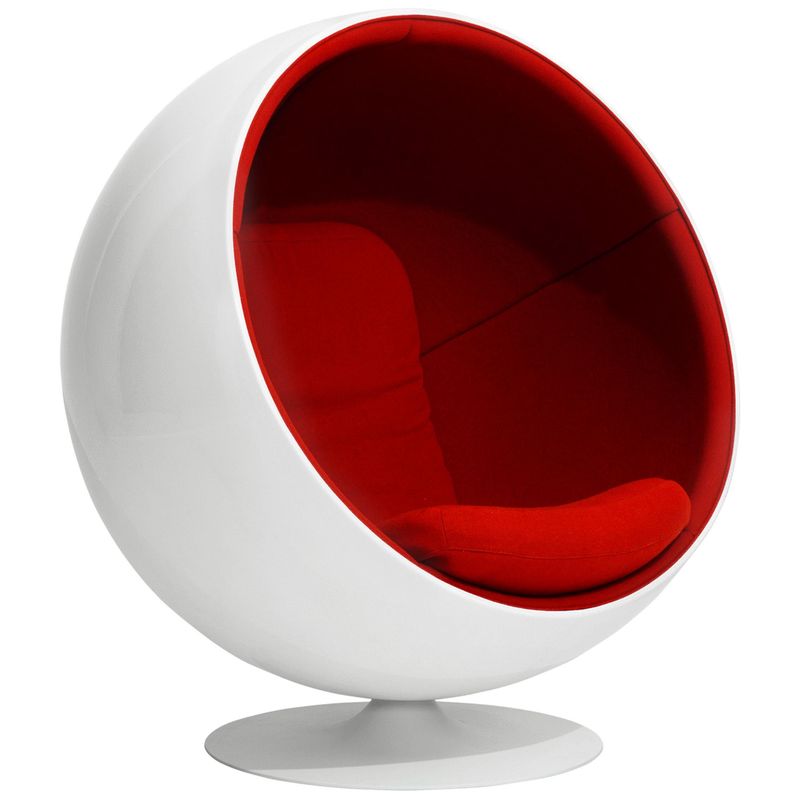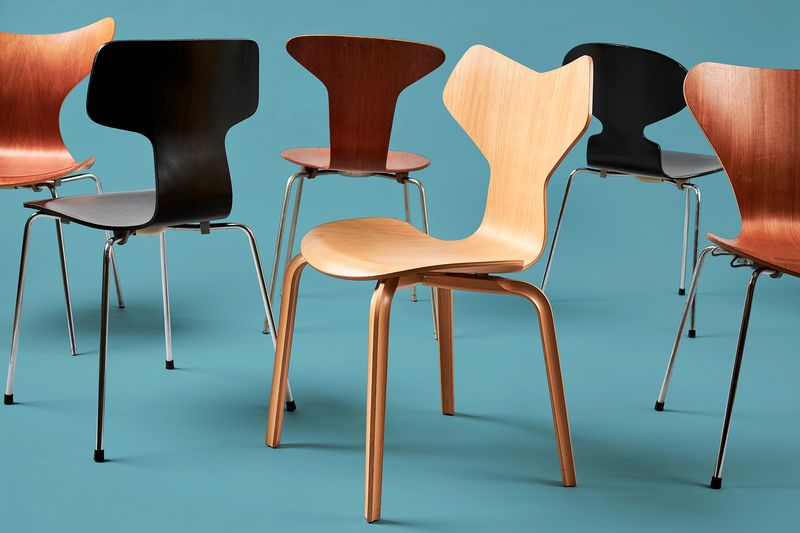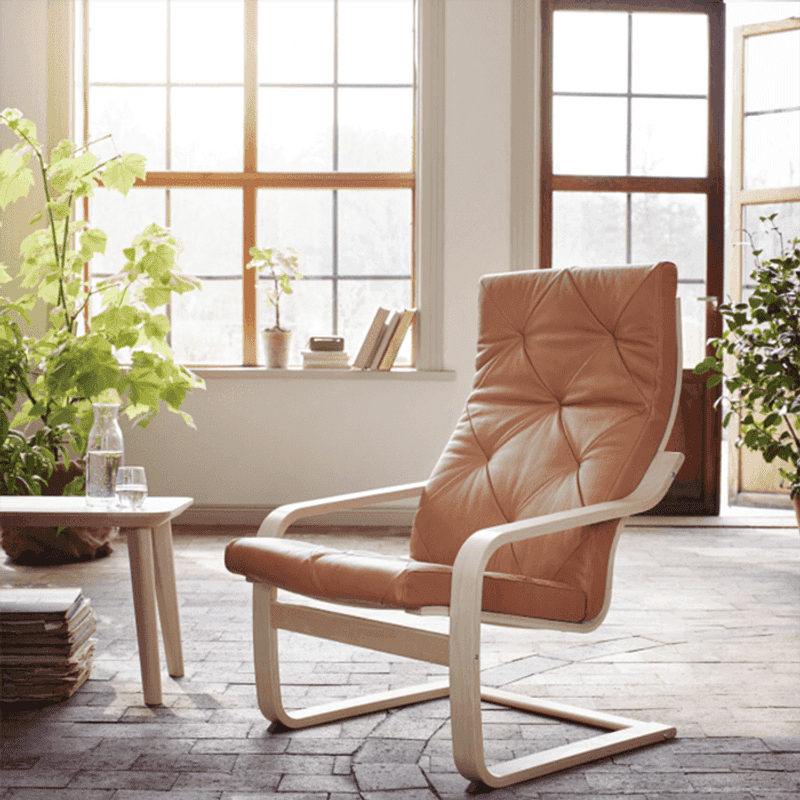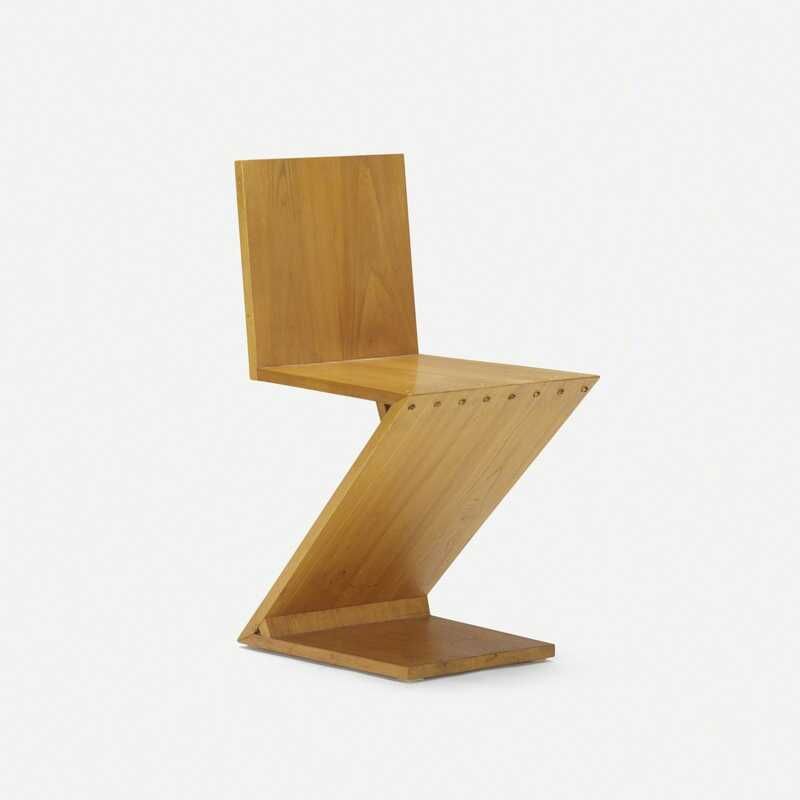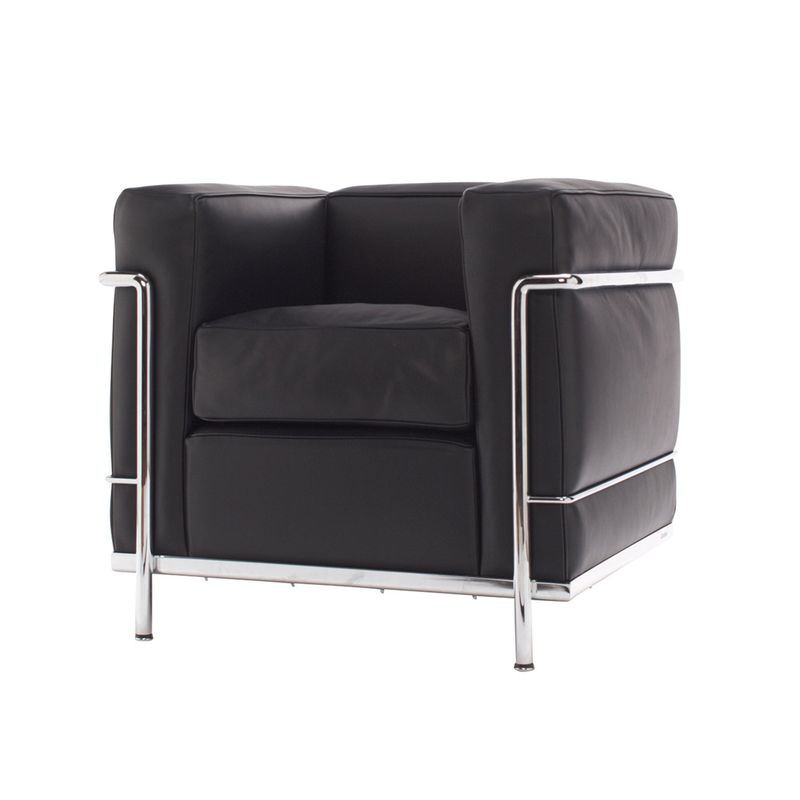Some chairs are just for sitting. Others have shaped the way we design, live, and think about everyday objects.
Throughout history, a handful of chairs have pushed boundaries – with radical materials, groundbreaking forms, or cultural impact that far outlasted their era. They’ve graced royal courts, modernist homes, and museum galleries alike.
Curious which seats earned a spot in design history? Here are 20 chairs that didn’t just offer a place to rest – they changed the world.
1. Windsor Chair
Born in the English countryside around 1710, this wooden wonder quickly became a symbol of American independence when it seated the founding fathers during the signing of the Declaration of Independence.
Featuring distinctive spindles, a solid wooden seat, and splayed legs, the Windsor’s ingenious design allowed for mass production long before the industrial revolution. Its remarkable durability and timeless appeal have kept it in production for over three centuries.
2. Thonet No. 14 Chair
What happens when you steam-bend wood? You get the world’s first mass-produced chair! Created by Michael Thonet in 1859, this revolutionary design sold an astonishing 50 million units by 1930.
Affectionately nicknamed the “cafe chair,” its lightweight frame and elegant curves graced Parisian cafés and spread worldwide. The genius lay in its simplicity—just six wooden parts and a few screws allowed it to be shipped unassembled in unprecedented numbers.
3. Barcelona Chair
Royalty for the modern age! When Ludwig Mies van der Rohe designed this leather and chrome masterpiece for the 1929 International Exposition in Barcelona, he created it specifically for the Spanish king and queen.
With its sleek leather cushions and scissor-shaped steel frame, the chair embodied the “less is more” philosophy of modernism. Though initially handcrafted, its iconic status led to mass production that continues today, making it the throne of choice for upscale offices and design enthusiasts worldwide.
4. Wassily Chair
Imagine stripping a club chair down to its bare essentials! That’s exactly what Marcel Breuer did in 1925 when he created this revolutionary design, inspired by the frame of his bicycle.
Named after his fellow Bauhaus teacher Wassily Kandinsky, the chair’s tubular steel frame and taut fabric strips created a floating sensation unlike anything before it. As the first chair to use bent tubular steel, it pioneered manufacturing techniques that would transform furniture production forever.
5. Eames Lounge Chair and Ottoman
Comfort met Hollywood when Charles and Ray Eames unveiled this luxurious creation in 1956 on national television. Their goal? To create the warm, receptive look of a well-used baseball mitt.
Combining molded plywood shells with supple leather upholstery, this midcentury masterpiece became an instant status symbol. Often spotted in psychiatrists’ offices and executive suites, it represents the perfect marriage of comfort and sophistication. Herman Miller has continuously produced it since its debut.
6. LC4 Chaise Longue
Reclining took on new meaning when Le Corbusier, Pierre Jeanneret, and Charlotte Perriand created this adjustable lounger in 1928. Often called the “relaxing machine,” its curved steel frame mimics the body’s natural resting position.
Unlike traditional furniture, the LC4 seems to float above its base, allowing users to adjust from sitting to fully reclined positions. The designers meticulously studied human posture to create this ergonomic marvel, which remains the definitive modern chaise lounge nearly a century later.
7. Panton Chair
Gravity seems to disappear with Verner Panton’s revolutionary 1967 creation—the world’s first single-form, injection-molded plastic chair. Looking more like a sculptural tongue than furniture, it eliminated all four legs in favor of a continuous S-shaped curve.
During the Space Age era, this psychedelic seating captured the imagination with its futuristic form and bold colors. Manufacturing challenges initially limited production, but modern technology finally caught up with Panton’s vision, making his groundbreaking design widely available today.
8. Adirondack Chair
Summer retreats wouldn’t be the same without Thomas Lee’s 1903 invention. Created for his family vacation home in Westport, New York, this outdoor icon features wide armrests and a slanted seat that keeps you from sliding forward.
Originally called the Westport chair, its simple, slat-based construction could be made from just one board of wood. The signature reclined position and generous proportions have made it the unofficial throne of porches, beaches, and lakeshores across America.
9. Egg Chair
Cocooned in your own private space! Arne Jacobsen sculpted this pod-like masterpiece in 1958 for the SAS Royal Hotel in Copenhagen, creating one of the most recognizable silhouettes in furniture history.
Using innovative techniques, Jacobsen first crafted the shell in his garage using clay to perfect its enveloping form. The chair swivels on its base, allowing sitters to turn away from the world. Its protective shape creates a room within a room, offering both privacy and acoustic dampening in open spaces.
10. Wishbone Chair (CH24)
Graceful yet sturdy, Hans Wegner’s 1949 creation takes its name from the Y-shaped back support that resembles a wishbone. Inspired by portraits of Danish merchants sitting in Ming Dynasty Chinese chairs, it blends Eastern elegance with Scandinavian practicality.
Each chair requires over 100 steps to complete, including the hand-woven seat that takes a skilled craftsman about an hour to finish. Despite its delicate appearance, the wishbone provides exceptional support while maintaining a light visual footprint that works in almost any dining space.
11. Tulip Chair
Fed up with the “slum of legs” under typical tables and chairs, Eero Saarinen created this pedestal marvel in 1956 to clean up what he called the “ugly, confusing, unrestful world.”
With its single central stem and swiveling seat, the Tulip Chair eliminated the forest of chair and table legs that cluttered dining areas. The seamless transition from base to seat creates a unified sculptural form that looks as futuristic today as it did over 60 years ago.
12. Red and Blue Chair
Looking more like a 3D painting than furniture, Gerrit Rietveld’s 1917 masterpiece embodied the De Stijl movement’s principles with its primary colors and geometric planes. Each element exists independently—the seat, back, and frame appear to float in space.
Originally created in unpainted wood, it gained its iconic color scheme in 1923 after Rietveld collaborated with artist Piet Mondrian. Though visually striking, comfort wasn’t the priority; this chair functioned more as a manifesto for modern design than practical seating.
13. Diamond Chair
Sparkle and shine! When Harry Bertoia unveiled this glittering creation in 1952, he transformed industrial wire into a sculptural seat that seemed to materialize from thin air. An Italian sculptor turned furniture designer, Bertoia claimed these chairs were mainly made of air.
The grid-like structure creates a light, transparent form that appears to float in space. Despite its delicate appearance, the welded steel construction provides remarkable strength. Its revolutionary manufacturing techniques helped bridge the gap between industrial production and artistic expression.
14. Cesca Chair
Cantilevered into design history, Marcel Breuer’s 1928 creation appears to defy gravity with its floating seat and lack of back legs. Named after Breuer’s daughter Francesca, this tubular steel wonder became one of the most copied chair designs in history.
The Cesca brilliantly combines industrial materials with traditional craftsmanship through its hand-caned seat and back. Its bouncy flexibility provides unexpected comfort despite the rigid materials. Mass production made this avant-garde design accessible to middle-class homes, democratizing modern design principles.
15. Plastic Side Chair by Eames
Affordable modernism arrived in 1950 when Charles and Ray Eames created the first mass-produced plastic chair. Their goal was democratizing good design by creating quality furniture that ordinary Americans could afford.
The single-shell seat, molded to fit the human body, could be produced in minutes and came in vibrant colors previously unseen in furniture. Originally designed for the Museum of Modern Art’s “Low-Cost Furniture Design” competition, these stackable wonders revolutionized school, office, and home seating worldwide.
16. Ball Chair
Step into your personal space capsule! Finnish designer Eero Aarnio created this pod-like sphere in 1963, capturing the Space Age zeitgeist with its futuristic form. The fiberglass shell creates a room within a room, complete with sound-dampening properties.
Originally designed for Aarnio’s own home when he couldn’t find a chair he liked, the Ball Chair quickly became a symbol of 1960s pop culture. Its appearance in numerous films and magazine shoots cemented its status as the ultimate conversation piece and private retreat.
17. Arne Jacobsen’s Series 7 Chair
Multiply by millions! Created in 1955 as a simplified version of Jacobsen’s earlier Ant Chair, this stackable sensation became the most copied chair in the world with over 7 million sold.
The secret to its success lies in the single-piece plywood shell, steam-bent into a shape that perfectly supports the human body. Its hourglass silhouette created a delicate, feminine profile previously unseen in furniture. The chair gained unexpected notoriety when a nude Christine Keeler was photographed straddling it in 1963.
18. Poäng Chair
Swedish practicality meets accessible design in this IKEA bestseller. Created by Japanese designer Noboru Nakamura in 1976, the Poäng has sold over 30 million units, making it possibly the most commercially successful chair ever made.
The secret to its enduring appeal lies in its cantilevered bentwood frame that provides a gentle bouncing motion. Initially called Poem, the chair embodies IKEA’s democratic design principles. Despite its low price point, it offers genuine comfort and durability that has kept it in production for nearly five decades.
19. Rietveld Zig-Zag Chair
Four simple wooden planes joined at unexpected angles create one of the most mathematically intriguing chairs ever designed. Gerrit Rietveld’s 1934 creation seems to defy physics with its Z-shaped profile that eliminates the need for legs.
Representing the essence of De Stijl movement principles, the chair reduces seating to its most basic geometric expression. Though visually striking, comfort takes a backseat to conceptual purity. The chair’s construction techniques influenced generations of designers, proving that innovative joinery could replace traditional chair elements.
20. Grand Confort LC2 Chair
Imagine a chair that’s essentially cushions floating within a metal cage! Le Corbusier’s 1928 creation turned furniture design inside-out by exposing its structural elements rather than hiding them.
Nicknamed “cushions baskets,” these cubic marvels were designed as modern alternatives to traditional overstuffed armchairs. The exposed tubular steel frame cradles plump leather cushions in a revolutionary arrangement. Originally created for Le Corbusier’s forward-thinking Pavilion de l’Esprit Nouveau, the LC2 became the definitive modernist club chair.

